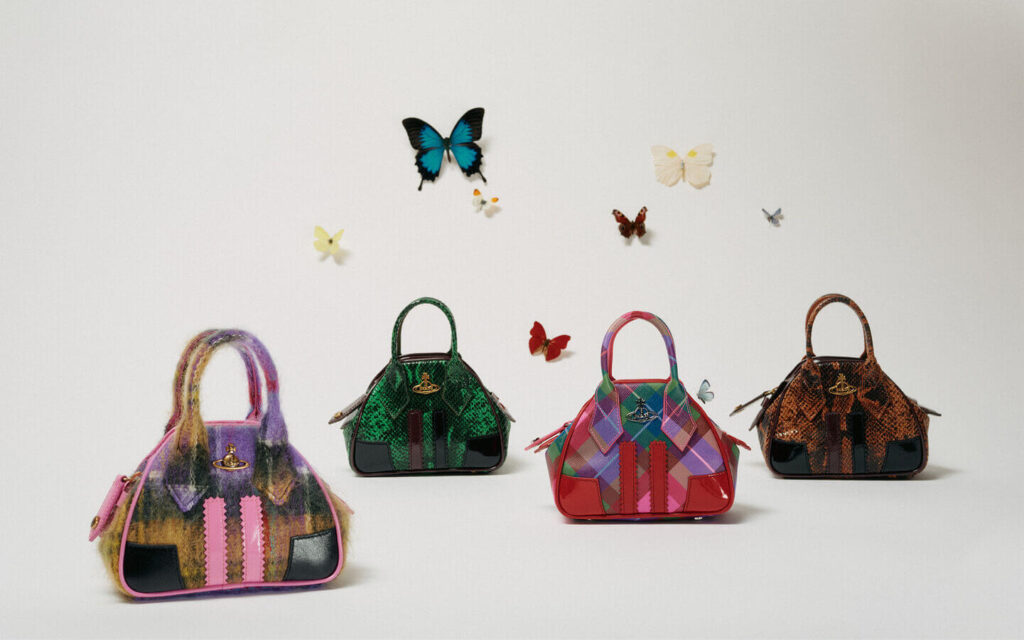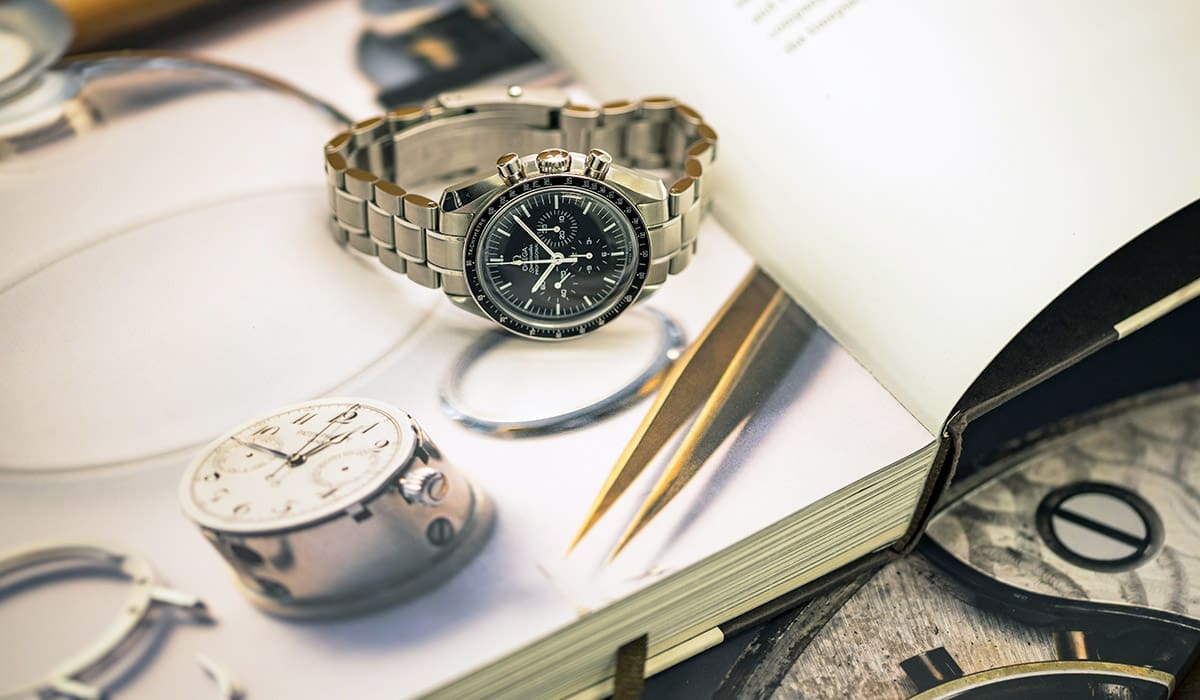Veganuary is over, but that doesn’t mean your sustainable fashion journey has to be.
The Veganuary challenge was created by a UK nonprofit of the same name to educate people about veganism during the month of January. While in 2014 it started off as a sign-up program to help participants follow plant-based diets, it has since grown into a movement, with people in every field — particularly fashion and beauty — embracing it.
Over the past several years, the interest in vegan and sustainable fashion has risen rapidly, according to The Vegan Society, not only among young designers who are conscious about the health of the planet, but also among consumers who are learning about the benefits of leaving behind fast fashion.
“Good Morning America” spoke with a group of sustainable designers about how they developed their businesses, why they decided to take the vegan route and what can be done, by both creators and shoppers, to help make the fashion and beauty industries less wasteful — not only during January, but every day.
The wave of sustainable and vegan fashion designers
Monica Santos, a Puerto Rican designer based in New York, launched her brand, Santos by Monica, amid the COVID-19 pandemic, to “challenge the traditions of the fashion industry” in a way that reflected her values and did not negatively impact the environment.
Before taking the leap with her label, the designer worked for numerous fast fashion (the business model of replicating trends and mass-producing them at a low cost) and luxury brands, and said she “gained visibility into supply chains and realized the effect the fashion industry has on the planet and garment workers and wanted to do something different.”
That’s when she said she decided to create a collection of handbags made entirely out of cactus leather — one of the various vegan leathers which sustainable brands have been loving.
Similarly, LØCI, the sneaker brand which has been endorsed by celebrities and dropped a collection with actress Nikki Reed, has made a name for itself due to its “animal free always” motto. Its 100% vegan shoes are made using recycled materials, including ocean plastic upper for the upper, foam and cork for the insoles, ethically sourced bamboo for the lining and rubber for the outsole.
LØCI co-founders Emmanuel Eribo and Philippe Homsy are not the only creatives using plastic waste to make products. While the material can be turned into vegan leather, it can also be made into smooth fabric — just ask La Gotta founder Valeria del Rey, whose stunning swimsuits are made out of recycled plastic bottles.
“La Gotta progressed organically toward becoming a sustainable brand based on my personal passion for second-hand and vintage pieces, as well as on my love for the environment, particularly our oceans and beaches,” del Rey said.
The love for the planet runs deep in the sustainable fashion industry. The team at SINBONO, a vegan handbag brand, said they decided to take the sustainability route after realizing that by adopting sustainable options, they could drop their carbon footprint by around 73% and help slow down global warming. “It is important to keep the planet’s health before our desires,” they said. “Our vegan leather is composed of a mixture of responsibly recycled plastic bottles and reclaimed fruit material. This produces a high-quality product that looks like animal skin, without harming animals or the environment.”
Casey Dworkin, the founder of vegan New York-based footwear brand Sylven, is an example of a designer embracing vegan design but not letting go of luxury. Her plant-based shoes are handcrafted in Italy by expert artisans, and have the look, the feel and the durability of high-end European leather shoes — but without the negative impacts that come with producing them. (According to PETA, turning animal skin into leather “requires massive amounts of energy and dangerous chemicals,” and raising animals for their skin to eventually be turned into leather “requires huge amounts of feed, pastureland, water, and fossil fuels.”)
“I was actually born on Earth Day. I started getting involved with environmental advocacy when I was around 14, and it has always been a big part of my life,” Dworkin said. “When I decided to launch my own brand, sustainable practices were a must for me from the get-go. I am incredibly passionate about new-age materials and components made from plants, so I focus a lot of my messaging on material use, but sustainability really is a holistic practice.”
Because of the recent popularity of vegan leathers, consumers now have many options to choose from when it comes to sustainable footwear and handbag brands, but for apparel, it’s often more difficult, as there is so much that goes into creating truly sustainable garments that are of high quality and last for generations.
French brand Parisienne et Alors is one of the brands designing sustainable ready-to-wear. Creative director Laury Thilleman said every piece is made locally in France and crafted from recycled and/or upcycled fabrics — most from natural fibers. “Fashion is one of the most polluting industries, but Parisienne et Alors is determined to make a change and to stand out as a positive example of how fashion can make a difference,” Thilleman told “GMA.”
Another European brand, Manola, creates chic activewear from environmentally-friendly materials, such as recycled nylon from ECONYL (which comes from discarded fishing nets, plastic and carpets) or organic cotton from PYRATEX, which generates 46% less greenhouse gas emissions than conventional cotton.
Loungewear brand PANGAIA is also big on recycled fabrics, and uses plant fibers, bio-based fibers and leather alternatives. Their approach to creating fashion is very much science-based. “Our goal is to demystify science and become a bridge builder between science and fashion — to make sustainable innovations the new normal,” Chief Innovation Officer Amanda Parkes said.
More mainstream brands are also embracing veganism and sustainability. Patagonia, Levi’s, Fabletics and H&M are all implementing sustainable practices into their businesses, and expanding their clientele by doing so. “Fabletics understands the importance of protecting the environment, and we want to ensure we are doing our part. As such, while there’s much work to be done, we have made sustainability a core focus and are proud of the steps we’ve taken thus far,” the Fabletics team, which just released various vegan leather leggings and pants, said.
Vegan beauty
Natural beauty products have been in for some time now, but for many brands today, the challenge has become: How do you make your production and shipping methods sustainable and entice people with the history and roots behind your organic products?
Luca, a fragrance company established in Old San Juan, Puerto Rico, in 2013, works with sustainable, local suppliers, uses upcycled (products made by transforming other recycled products) materials and only puts out small drops. “One of our core oils is a fossilized amber extracted from a 35 million-year-old Himalayan fossilized tree resin. This oil comes from a process called ‘dry distillation,’ whereby the Amber resin is processed over high heat until an oily substance is obtained. Another stellar oil in our perfume is the cedar, which is obtained from the sawdust created when the wood is cut for lumber,” the Luca team said.
Another brand, Kumiko, also said it embraces nature and shows consumers the benefits of living a vegan lifestyle, through skincare. The company said its products are made with Japanese matcha tea, an antioxidant, and are non-toxic, gluten-, parabens- and cruelty-free.
“It is an undeniable reality that the vegan preference is on the rise worldwide, along with respect and care for the environment. Kumiko is aware of this, with a total commitment for sustainable products from the beginning of the production line to the end, always considering recyclable packaging,” the team said.
Sustainability is a lifestyle
Organic ingredients and vegan leathers — particularly cactus, apple, pineapple and corn — have become the new go-tos for sustainable designers looking to create eco-friendly luxury, but as people learn more and more about sustainability, it has become clear that there are many parts to it, both as a creator and a consumer.
Using organic, vegan materials is just one of the things brands are doing to make their businesses more sustainable; there is also packaging, production and ethics to think about. LØCI, for example, said it donates 10% of its profits to environmental causes, including ocean conservation charities and carbon offset projects. Santos said she has made her entire packaging either compostable or recyclable, and recently introduced biodegradable hang tags embedded with wildflowers, so that when you plant the paper in a pot of soil, the seeds in the paper germinate and grow into plants. Also, with every Santos by Monica bag sold, one tree is planted with One Tree Planted.
Santos by Monica, apart from being charitable, follows a made-to-order production strategy, which means the designer creates only enough product to fit the demand, and therefore avoids generating waste. La Gotta and Manola produce in the same way.
Araks Yeramyan, the designer of cotton lingerie brand Araks, said educated shoppers don’t just want eco-friendly materials, they want to know that the businesses they’re supporting are actively trying to reduce their carbon footprint, eliminate toxic waste and help their communities and their planet. This idea of getting rid of waste by using natural materials or extending the life of each garment is also the reason — apart from nostalgia — vintage and pre-owned clothing sales have spiked in the fast few years.
Thrilling, an online marketplace that sells vintage and second-hand items from small businesses across the U.S., said that orders have increased by 240% over the last year, and the amount of vintage inventory that stores uploaded to the site increased by nearly 500%.
How can creators and consumers help fashion become more sustainable?
If you’re looking to make the switch to shopping vegan and living sustainably, Santos said you need to do your research.
“Consumers could be more aware by taking into account where products they consume come from, what they are made of and what the ideals of the brands they support are,” she said. “Making an effort to learn more about the brand before consuming and asking themselves if the product is something they really need before making the purchase.”
Jordan Clark, the founder of vegan footwear brand Dooeys, sai
d shoppers should ask how things are made and buy things that last. “If a brand gives vague material information on a product page, it’s probably because it’s not worth sharing,” she said. “Invest in pieces you love now and will continue to love over the coming years. I also find it helpful to follow influencers and bloggers that focus on sustainable fashion and shop sustainable marketplaces like Made Trade that do the vetting for you.”
Del Rey said it’s also the creators’ job to educate shoppers on the actual value of a vegan brand or item, rather than market the sustainability movement as just the latest hot trend.
“We feel as if awareness of veganism in the fashion industry can be promoted the same way a vegan diet and lifestyle was,” the SINBONO team said. “If you go back a couple of years, not many people were ready to make the shift, but now, many people choose vegan products. This was primarily done through the media and companies themselves.”
And, they said, if more big, popular companies make the shift toward vegan fashion, customers will inevitably be more interested in learning about the topic.
Dworkin, of Sylven, said the word “veganism” so often gets equated with diet, but it’s absolutely a lifestyle.
“It’s about consciously eliminating the use of animal products, and fashion plays a huge part in that equation,” Dworkin said. “I think a majority of people who first dabble in being vegan really hone in on food, but I think that fashion can and should play a much larger role in introducing new alternatives to the masses, especially for people who may not be ready to make a full lifestyle change, finding a pair of boots that are made from apples instead of cows, or a coat made from Tencel instead of down is a great way to reduce the number of animal products consumed.”





More Stories
A Return to Designing as a Destination
Rituals Private Collection Comfort Review Cotton Blossom
Flutter Your Lashes – A LITTLE OBSESSED